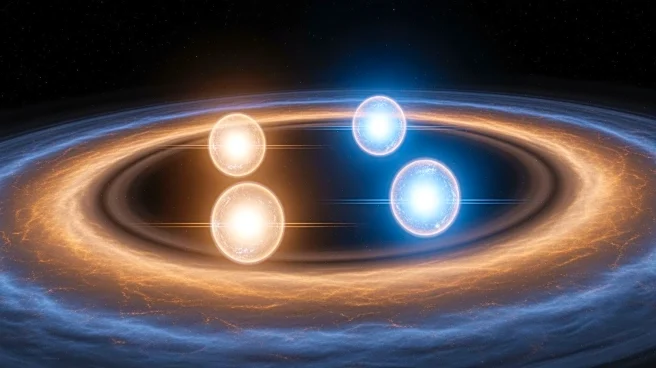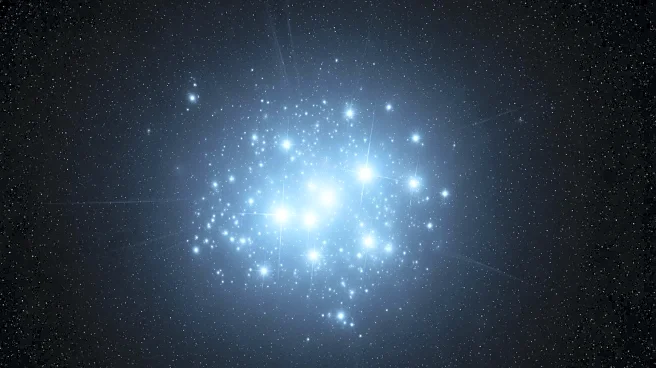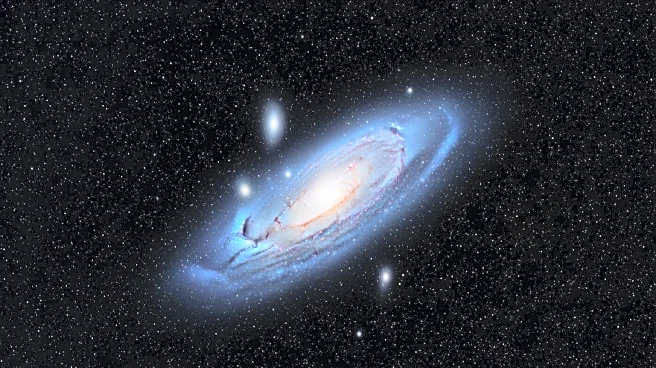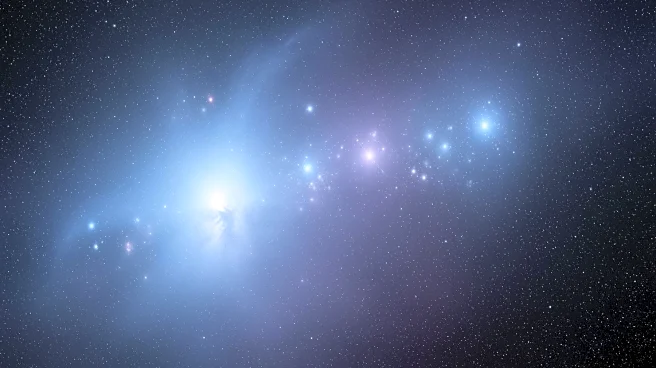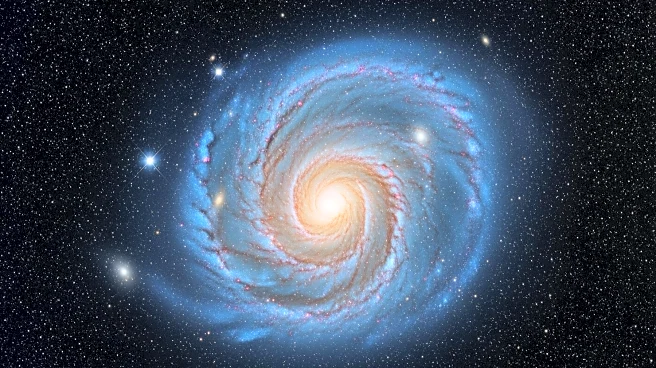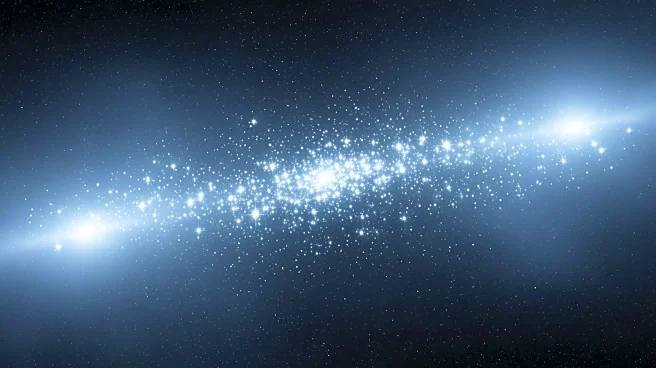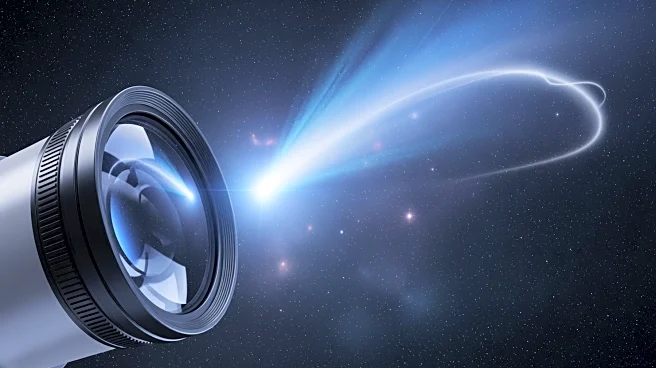What's Happening?
Astronomers have identified a unique quadruple star system, HD 98800, located about 150 light-years away in the constellation Crater. This system consists of two binary pairs orbiting each other, with
one pair hosting a dust disk potentially indicative of planet formation. The study, led by Dr. Elise Furlan from UCLA, suggests that the gravitational dynamics within the system could lead to complex interactions affecting dust particle movement. The presence of two distinct dust belts around HD 98800B provides insights into the early stages of planet formation in multi-star systems.
Why It's Important?
The discovery of HD 98800 offers valuable insights into the processes of planet formation in complex gravitational environments. Understanding how planets can form in such systems could expand current models of planetary development and influence future astronomical research. This system serves as a natural laboratory for studying the effects of multiple stars on protoplanetary disks, potentially informing theories on the formation of planets in similar environments. The findings could have implications for the search for exoplanets and the study of star formation in the universe.
